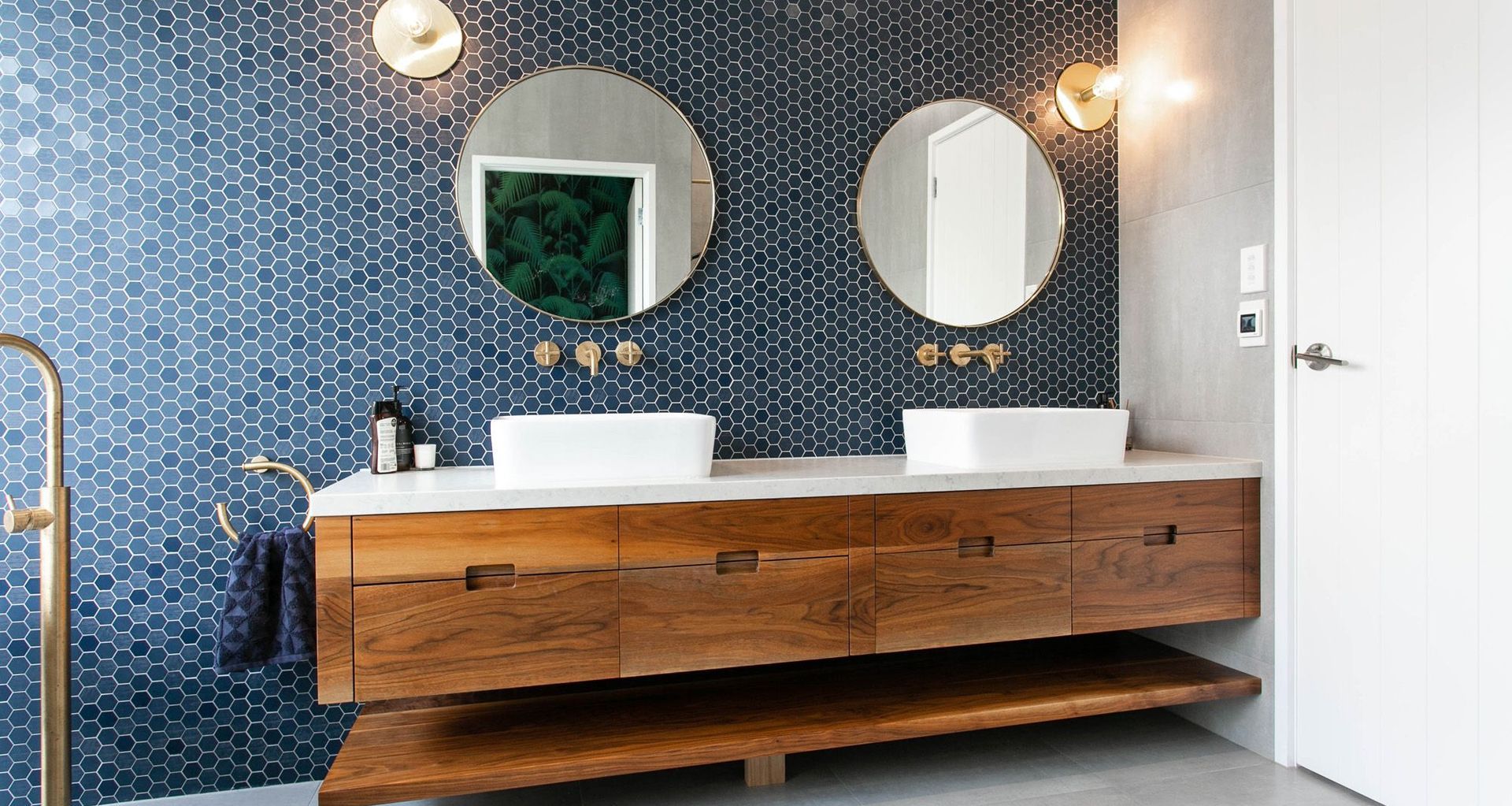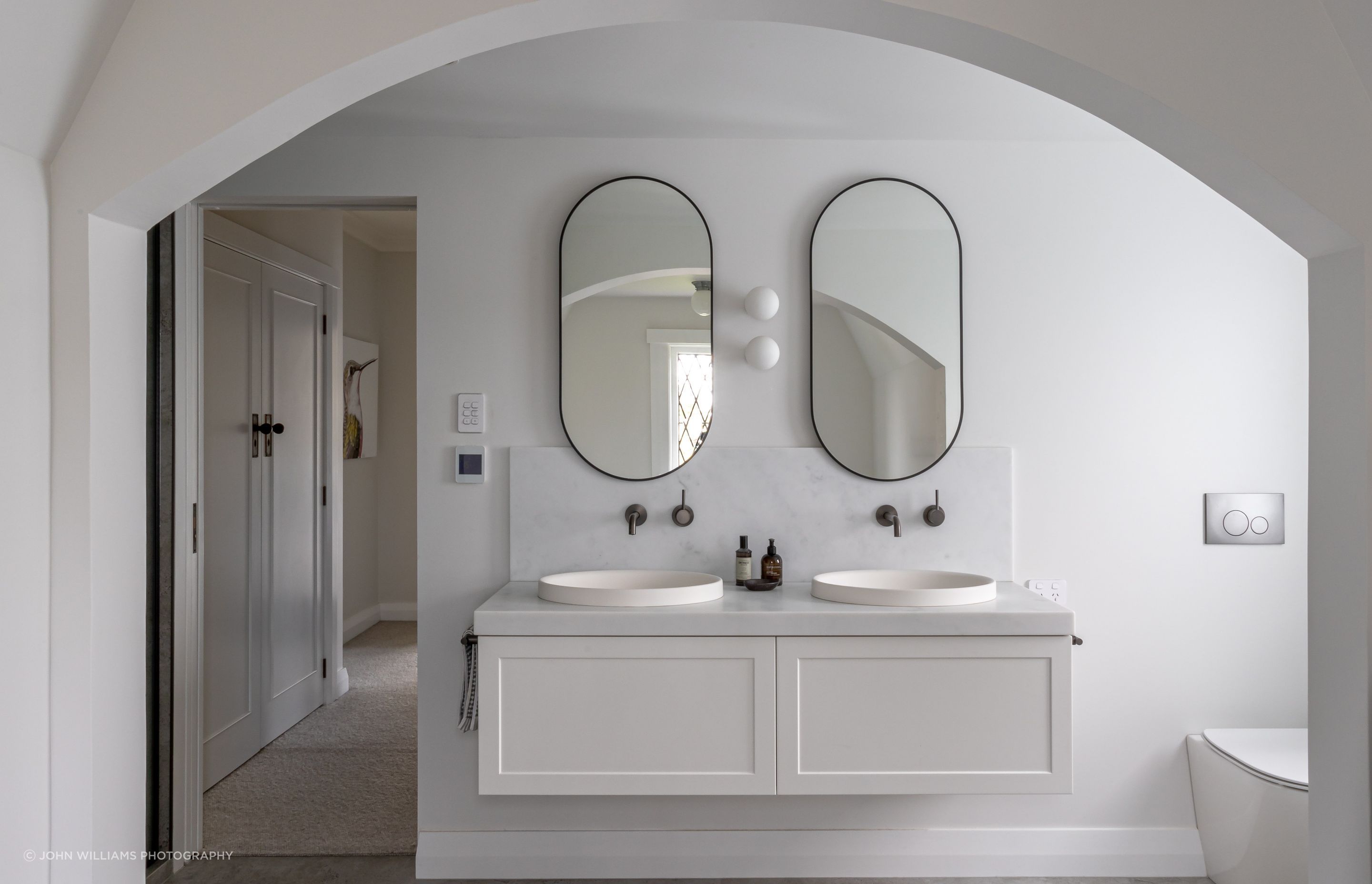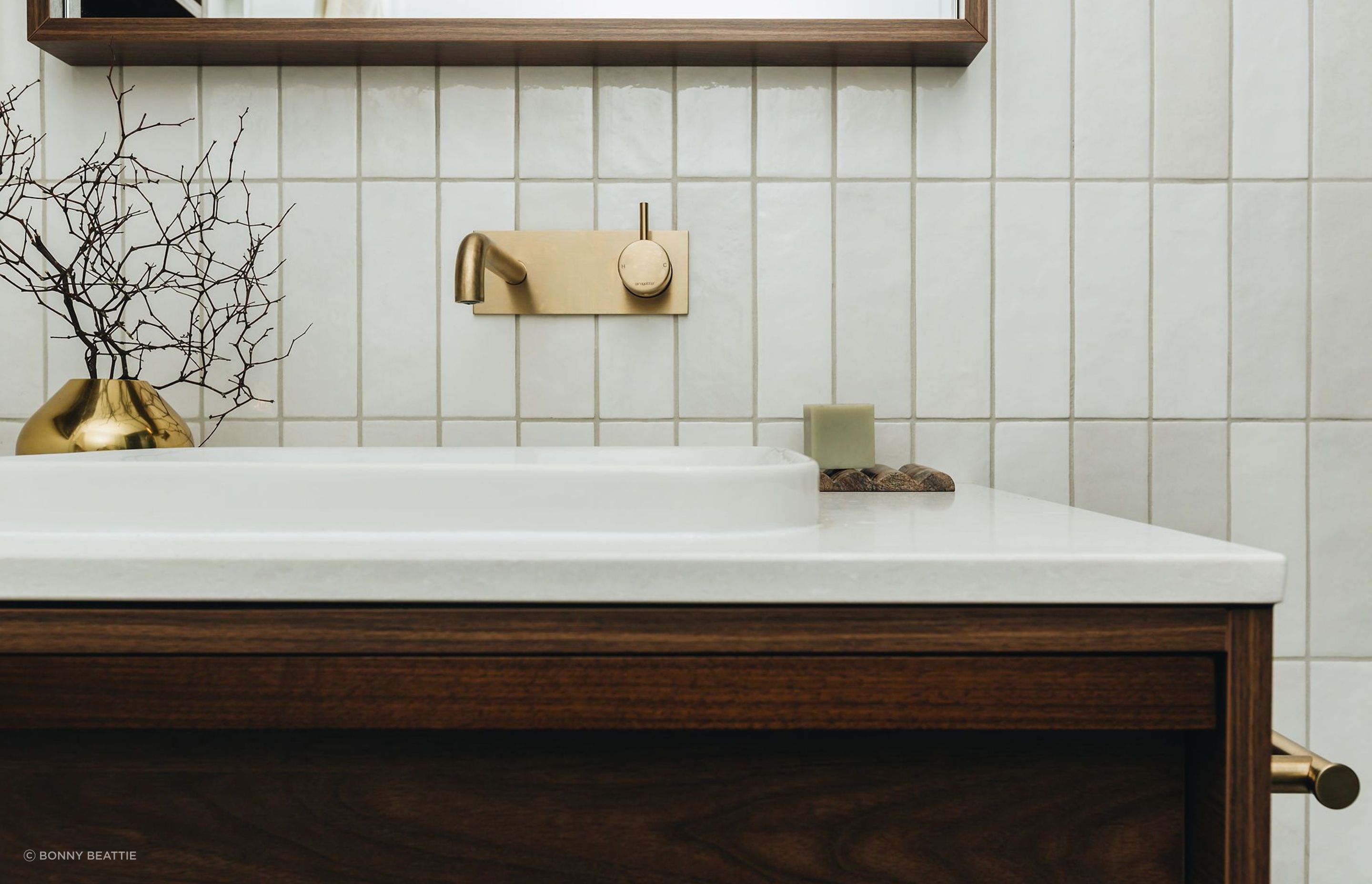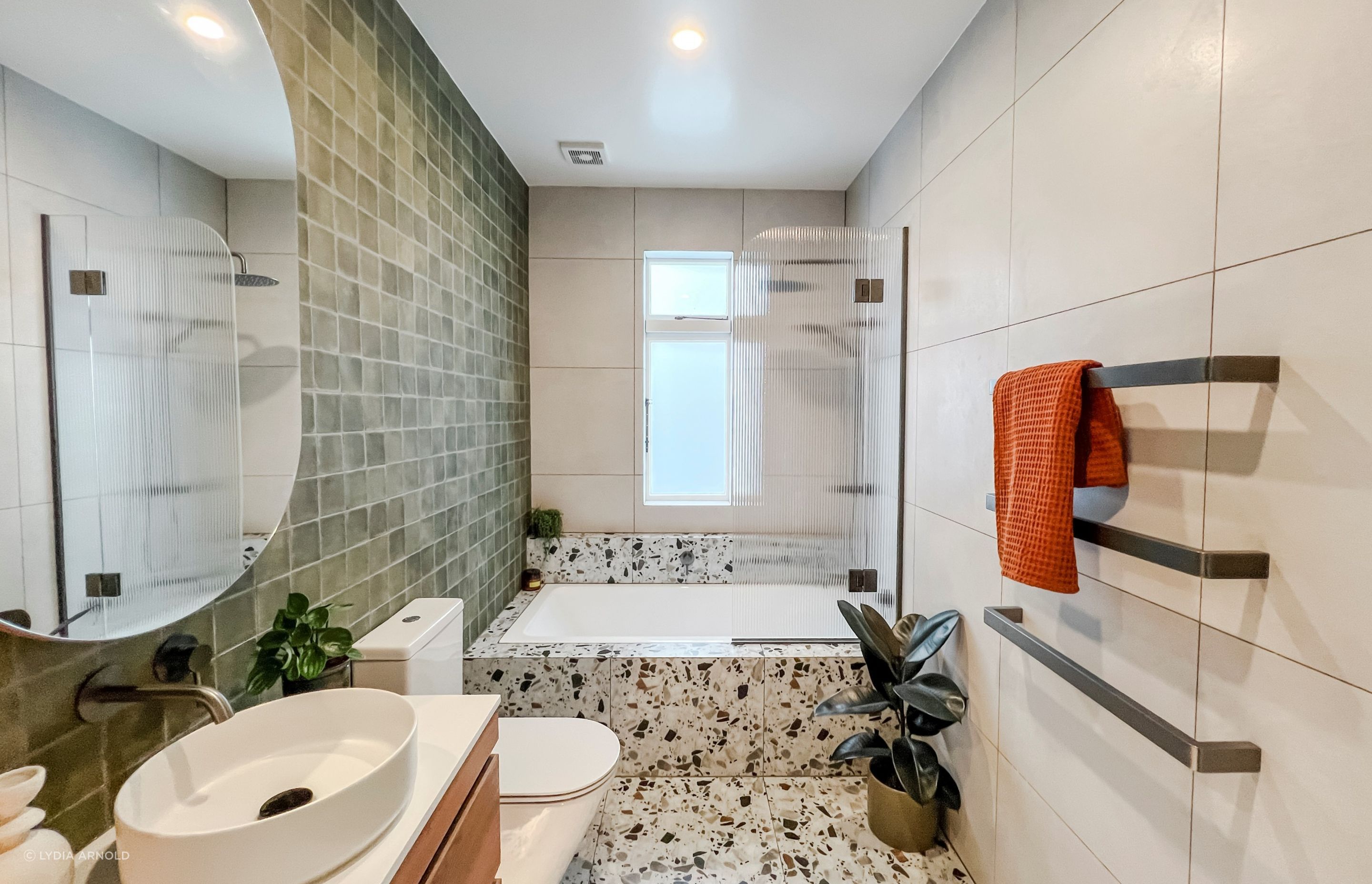How to plan and save money on a luxury bathroom renovation

The increasing sophistication of commercial beauty and spa spaces has led to an awareness and a demand for the same look in our home bathrooms. But the cost of imitating these high-end fit-outs doesn’t have to be extravagant. You can achieve a cohesive, luxurious look with clever bathroom design, smart choices and careful planning.
The key to achieving a luxury bathroom design
A bathroom is a space where you can unwind, relax and pamper yourself, so creating a relaxed ambience or mood is key to the luxury spa feel. Modern bathroom design is more than creating just a functional space. It's about capturing the right environment and atmosphere as well for a bathroom space that has just the right balance.
“The main thing when working to create the ambience you want is to introduce different textures in your materials and colours, but make sure they’re cohesive,” says Hamish Phillips, of Christchurch’s Art of Bathroom. “That layering of textures of materials and colours and light really gives a ‘depth’ to a bathroom.”
However, it’s essential not to go into a bathroom renovation without a plan.
“You can get a plan from a good bathroom designer for as little as $1,000, and this means you can buy to that plan, rather than making it up as you go,” says Lucan Donovan, National Kitchen & Bathroom Association education representative.
“Think about what you are trying to express. The planning is so important because as much as helping you save money, it helps you not waste it by not having to make changes when you find things don’t work.”

Enhancing the sense of spaciousness
The unifying thing in all luxury bathrooms is a sense of spaciousness.
Some bathrooms are bigger than bedrooms and if they’re in a convenient location, have windows with picturesque views or doors out onto balconies.
But not everyone has the advantage of lots of space, so what can you do to create that spacious feeling without building a whole new addition to your home?
Keep your floor clear
The first and by far the easiest thing to do is to get everything off the floor. Bathroom storage is key to doing this. That’s why luxury health spas almost always have everything tucked away; having lots of clutter in a small space makes the room feel even smaller.
“Storage is underrated,” says Lucan. “It’s easy to do a beautiful bathroom with nothing in it—using such things as floating ceramics—but in keeping things minimal, you may well end up regretting you have nowhere to put things, and so storage often gets added after the fact.”
Prioritise bathroom storage
Bathroom cabinets come in an enormous range of different shapes, including tower cabinets for tight spaces, and recessed cabinets that sit into the wall, giving storage for medicines, creams and perfumes while not intruding too much into the room.
Putting things on the wall helps to open up the floor space, and that has the added advantage of increasing the perception of space.
“Floating furniture is really important—it gives a pleasing aesthetic and the illusion of more space and then you can play with that negative space by putting lighting underneath. Not only does it give light but it creates mystery and softness—[adding] to that luxury ambience,” says Lucan.
Invest in large mirrors
Bathroom mirrors are an essential item, and choosing large ones gives the visual illusion of doubling the size of the room. When matched with the right lighting—perhaps backlit as part of the soft, indirect lighting that’s a visual cue to luxury—mirrors transform a room and can hide the cabinetry needed for bathroom essentials.
Furniture and fittings open up potential
Creating a wet room with no shower screen opens up the space and saves money on installing glass. Alternatively, do away with an expensive tiled wall and install a single, frameless glass screen. It’s a more minimalist approach, says Hamish.
“In smaller bathrooms especially, doing your shower in frameless means there’s no structure and that creates the perception of more space,” says Hamish.
To bathe or not to bathe
It may be heresy for a luxury bathroom, but consider whether you really need a bath. A beautiful, standalone porcelain bath is a visual statement and also an overt paean to luxury—being able to take a bath implies time (the biggest luxury of all).
But consider whether you would be better off installing a large, fully tiled shower, rather than squeezing a small bath and shower into your space. It will reduce your costs, and the generous shower space will increase the feeling of opulence.
Related article: 8 small bathroom ideas to make your bathroom feel bigger

The question of tiles and hard surfaces
Obviously, a bathroom is going to use hard surfaces, but you’re not restricted to putting tiles on the floor. A tiled shower is the hallmark of a luxury bathroom, but when it comes to tiles, the price range is vast. The choices are endless here — porcelain, large format, mosaic, clay — and costs vary from $40m2 to $200m2 plus.
Marble and solid stone are traditionally the most luxury looks available in tiles, but porcelain tiles are a much more affordable option than genuine marble. Fortunately, there are a myriad of options for marble “finishes” in porcelain tiles, so this is a key area where you can get the look for less. In turn, ceramic tiles are more affordable than porcelain, so it’s worth investigating the “marble” finishes available in ceramic tiles, that will still give you the aesthetic you want.
What lies beneath and other options
In older homes where beautiful native timbers are hiding under lino or old tiles, utilise that timber to add a feeling of character and warmth to the bathroom. Alternatively, if you have a concrete substrate in a new build or older home where you want to replace the floor, simply polish and seal the concrete to achieve a stunning look without the expense of the tiles and tiler.
For bathroom walls, wallpaper is another fantastic alternative to tiles.
Rolls of beautiful wet area-specific wallpaper can start at a reasonably affordable price — $200 or so per roll for a roughly 50cm x 10m roll, which means two rolls will do an approximately 3m x 3m wall. Fibreglass mural wallpapers are available for $400+ per roll (this covers a similar space) but compared to the price of tiles on a square metre basis, a luxury look can be achieved at a much lower cost.

Lighting brings everything together
“Soft lighting really helps, but so does having different light sources,” says Hamish.
Use a mix of statement, ambient and accent lighting for maximum effect. A stunning pendant light, perhaps over the bath itself, and ambient lighting around the bathroom mixed with accent lighting around the cabinetry create mood and function.
Avoid harsh lighting, says Hamish. “Lovely soft lighting makes for a relaxed and serene space—the epitome of luxury.”
And a hint from Mike Thorburn from ECC Lighting: “Always have a low light source, so you can come in to use the toilet in the middle of the night and not blind yourself.”
Keep things toasty
Bathroom heating is another factor to consider if you're trying to capture the comfort of a luxurious bathroom. Underfloor heating is a high-end feature that’s quickly becoming essential these days, especially in the southern regions of the country that experience much colder climates. It’s certainly cheaper and easier if you are already installing it in the rest of the house in a new build situation, but if you’re renovating your bathroom and the floor is already down, then there will be an investment required.
To maintain a modest budget, radiators or wall and ceiling bathroom heaters are a good alternative for a contemporary bathroom. Their designs have become quite sleek in recent times, and boast some great features like rapid heating and quiet operation to preserve the peace.
Related article: 7 bathroom heating options and what they'll cost you to run

How to reduce the cost of professionals and consents
Professionals and their time is a key expense, so keeping the fussy details or major plumbing changes to a minimum will help your cause.
Wet areas need waterproofing and that needs building consent, which can set you back as much as $2,000 to $4,000.
You’ll need a carpenter to build the framing and install the substrate. Their charge-out rate is around $75 per hour and there is usually three to five days of work, plus materials — more if the bathroom is bigger or has different levels in the design. Then you’ve got waterproofers, plumbers and electricians, and tilers to finish.
Sign-off is needed on much of the work. Plumbers and electricians are self-certifying but you’ll need council approval on the building and waterproofing.
Tilers are $100-120 + GST per metre, not per hour. Large format or mosaic tiles can jump their cost up to $150-170 + GST per metre. It seems counterintuitive for large format tiles—they cover more space, yes? But they also need more people to manoeuvre them and place them, and they’re a lot more complicated to fit into corners and around light fittings. Mosaics are just generally more fiddly and complicated.
Remember when looking for bargains you often get what you pay for. Building merchants and online auction sites certainly have less expensive products but for a reason. “If it’s too good to be true, it likely is,” says Lucan.
Consider the value of the warranties offered. “They’re only noticed when you need it and even then, while faulty parts may be readily replaced, who’s going to pay for the tradies who need to come in?” asks Hamish.
It always pays to weigh up between cost and value, because while a luxe look can be achieved by carefully selecting high-end-looking products at lower price points, quality is not something to be overlooked.
Achieve your luxury bathroom design without the hefty price tag
As you can see, there are a lot of ways to achieve a luxury bathroom design in your next renovation without breaking the bank. From techniques that help you accentuate the sense of spaciousness to selective choices of bathroom fixtures and fittings, you can achieve all your goals and enjoy a bathroom that will make you feel you're at a retreat, every day.
This article was updated on 24th October, 2024.
Browse ArchiPro's full range of high-quality bathroom products
